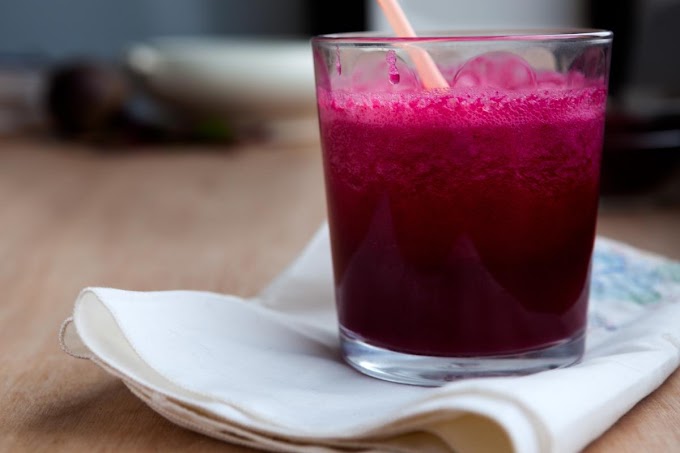Pasta is a beloved dish worldwide, celebrated for its versatility, flavor, and ease of preparation. However, traditional pasta dishes can often lean towards being heavy, especially when paired with rich sauces like alfredo or bolognese. But pasta doesn’t have to be indulgent or unhealthy. There are numerous healthy options to pair with pasta that not only enhance its flavor but also provide a balanced, nutritious meal. If you're looking for wholesome pairings that keep your pasta dishes light yet satisfying, here are some excellent options.
1. Vegetable-Based Sauces and Additions
One of the easiest ways to make a pasta dish healthier is by incorporating a variety of vegetables. Vegetables provide essential vitamins, minerals, and fiber, while also adding bulk to your meal without many calories.
a. Tomato-Based Sauces
A simple tomato-based sauce like marinara is an excellent base for pasta. It’s naturally low in fat and calories, and tomatoes are rich in antioxidants, particularly lycopene, which has been shown to reduce the risk of chronic diseases. Additions such as garlic, basil, and oregano provide extra nutrients without increasing the calorie content. To boost the nutrition further, you can mix in chopped vegetables such as zucchini, mushrooms, or bell peppers.
b. Roasted Vegetables
Roasted vegetables like eggplant, broccoli, cherry tomatoes, and carrots can be tossed with pasta for added texture and flavor. Roasting enhances the natural sweetness of vegetables and creates a delicious contrast with the savory pasta. This also adds fiber and various vitamins to your meal, improving its overall health profile.
c. Greens
Dark, leafy greens like spinach, kale, and arugula make excellent pasta pairings. They are packed with nutrients such as iron, calcium, and vitamins A, C, and K. You can sauté them with a bit of olive oil and garlic or toss them raw into a warm pasta dish to wilt slightly. Not only do greens provide a fresh taste, but they also bulk up your meal without adding many calories.
2. Lean Proteins
Adding lean protein to your pasta dishes is an excellent way to create a well-balanced meal. Protein is essential for muscle repair and growth, and it helps keep you full for longer. Here are some healthy protein options to consider pairing with pasta:
a. Grilled Chicken
Grilled or baked chicken breast is one of the most popular and versatile lean proteins. It’s low in fat and high in protein, making it a great addition to a pasta dish. Chicken pairs particularly well with tomato-based sauces or pesto and can be seasoned in various ways to suit the flavors of your dish.
b. Turkey Meatballs
Instead of traditional beef or pork meatballs, try using ground turkey. Turkey is lower in fat and calories but still provides a good amount of protein. You can enhance the flavor by adding herbs like parsley, thyme, and oregano. Turkey meatballs work well with marinara sauce or a light olive oil and garlic base.
c. Seafood
Fish and shellfish are excellent sources of lean protein and healthy fats, particularly omega-3 fatty acids, which are great for heart health. Shrimp, salmon, and white fish like cod or tilapia can all be paired with pasta. For a Mediterranean twist, try a light lemon-garlic sauce or a seafood marinara. Clams and mussels also work well in pasta dishes, particularly in a garlic and white wine sauce.
3. Plant-Based Proteins
For those looking to reduce their meat intake or follow a plant-based diet, there are plenty of nutritious, plant-based protein options to pair with pasta.
a. Legumes
Lentils, chickpeas, and beans are excellent sources of plant-based protein and fiber. They can be easily incorporated into pasta dishes for a hearty and satisfying meal. For example, lentils can be used in place of ground meat in a bolognese sauce, while chickpeas can be roasted and tossed with pasta for added texture and flavor. Not only are legumes a great protein source, but they also help regulate blood sugar and improve digestion.
b. Tofu or Tempeh
Tofu and tempeh are versatile plant-based proteins that can be marinated and sautéed, then added to pasta dishes. They work well in both Asian-inspired pasta dishes, such as sesame noodles, or in more traditional Italian-style dishes. Tofu is rich in protein and low in fat, while tempeh, which is made from fermented soybeans, provides a good source of probiotics that promote gut health.
c. Nutritional Yeast
While not a protein source on its own, nutritional yeast can add a cheesy, savory flavor to plant-based pasta dishes. It’s rich in B vitamins and contains a small amount of protein. Sprinkle it over pasta as a substitute for parmesan cheese, or mix it into sauces for an umami boost.
4. Healthy Fats
In moderation, healthy fats are an important part of a balanced diet. They add richness to pasta dishes without the need for heavy cream or butter-based sauces.
a. Olive Oil
Extra virgin olive oil is a staple of Mediterranean cooking and is rich in heart-healthy monounsaturated fats. Drizzle olive oil over your pasta for a simple, flavorful sauce, or use it as a base for sautéing garlic and vegetables. Olive oil also contains antioxidants and anti-inflammatory compounds that support overall health.
b. Avocado
For a creamy, dairy-free option, consider adding avocado to your pasta dishes. Avocados are rich in healthy fats, fiber, and potassium. You can blend avocado with herbs, garlic, and lemon juice to create a creamy, nutrient-dense sauce that pairs beautifully with whole grain pasta or zucchini noodles.
c. Nuts and Seeds
Nuts and seeds provide healthy fats, fiber, and a satisfying crunch to pasta dishes. Walnuts, pine nuts, and almonds are great choices. You can use them to make a pesto sauce or sprinkle them over your pasta for added texture. Seeds like sunflower seeds or chia seeds can also add a nutritional boost without overpowering the flavor of the dish.
5. Whole Grain and Alternative Pastas
While traditional white pasta can be part of a balanced diet, swapping it for whole grain or alternative pasta varieties can significantly boost the nutritional content of your meal.
a. Whole Wheat Pasta
Whole wheat pasta is higher in fiber and nutrients compared to white pasta. It’s a simple switch that can help you stay fuller for longer and stabilize blood sugar levels. Whole wheat pasta pairs well with tomato-based sauces, pesto, and vegetable-loaded dishes.
b. Legume-Based Pastas
There are now several legume-based pasta options available, made from chickpeas, lentils, or black beans. These pastas are naturally higher in protein and fiber than traditional pasta and have a slightly different texture that adds variety to your meals. They work well with simple sauces, allowing their unique flavors to shine through.
c. Zoodles (Zucchini Noodles)
For a low-carb alternative, consider using spiralized zucchini or other vegetables like butternut squash or carrots as your "pasta." Zoodles can be served raw or lightly sautéed and topped with your favorite healthy sauces and proteins. They’re a refreshing and nutrient-rich option, especially in summer.
Conclusion
Pairing pasta with healthy options is all about balance. By incorporating vegetables, lean proteins, plant-based alternatives, healthy fats, and whole grains, you can turn your pasta dishes into nutritious and satisfying meals. Whether you're looking to cut calories, boost fiber, or increase your protein intake, there are endless ways to keep pasta as a healthy part of your diet without sacrificing flavor or satisfaction.








Social Plugin